Introduction
Foot health often takes a backseat until discomfort demands attention. For those with flat feet, the challenges are more than surface-level—persistent pain, limited mobility, and daily fatigue can be a heavy burden. Among the countless remedies available, one pressing question arises: can compression socks genuinely offer relief for flat feet?
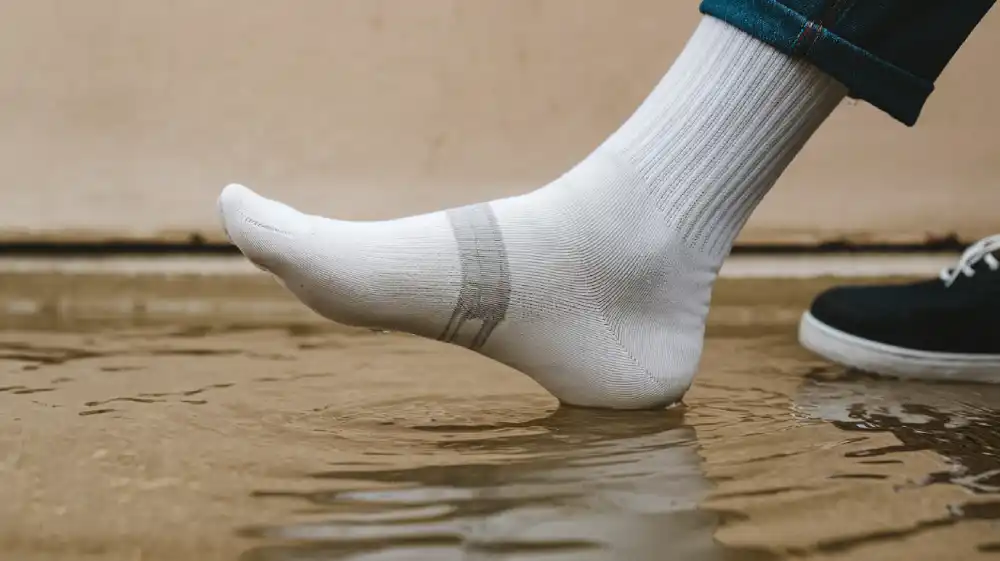
With myths and misinformation swirling, it’s hard to separate fact from fiction. Are these socks a practical solution or just another fleeting trend? While they’ve gained recognition for reducing swelling and enhancing circulation, their effectiveness for flat feet remains a topic of debate.
While not a cure, compression socks offer significant relief for flat feet. By providing targeted arch support and boosting circulation, they effectively reduce common pain and swelling. For a true long-term solution, they should be combined with supportive footwear and orthotics to address the underlying structural issues.
This post will unravel the science behind compression socks and their potential benefits for flat feet. Whether you’re battling daily discomfort or searching for answers to improve your mobility, it’s time to clear the confusion and uncover the truth about this widely discussed solution.
Understanding Flat Feet
What Exactly Are Flat Feet
Flat feet, also known as fallen arches, occur when the arches of the feet either fail to develop properly or collapse over time. This condition results in the entire sole making contact with the ground, disrupting natural body alignment and potentially leading to discomfort in the feet, legs, or back. While some individuals experience no issues, others face significant challenges due to this structural imbalance. Approximately 20-30% of the population is affected by flat feet, with many being asymptomatic; however, others may suffer from pain, swelling, and fatigue that can impact their posture and athletic performance (NewYork-Presbyterian on flat feet, Wikipedia on flat feet).
Causes and Risk Factors
Flat feet can be caused by a variety of factors, both inherited and acquired. Genetics play a key role, as certain families may have a genetic predisposition to flat feet. Lifestyle and health factors such as obesity, aging, weakness of the foot and leg muscles, long-term wear and tear, and injury contribute to the weakening of the arch-supporting tendons. Medical conditions like arthritis or diabetes further increase the likelihood of developing flat feet. The condition often becomes more apparent as individuals age or gain weight, accelerating the collapse of the foot’s natural arch.
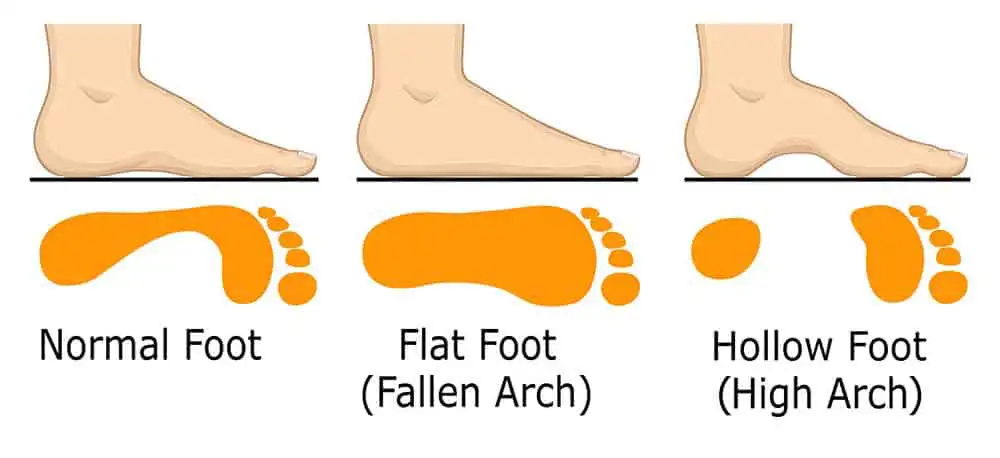
Symptoms
The symptoms of flat feet vary widely but often include persistent foot pain, particularly in the arch or heel. As the arch collapses, localized pressure increases, causing discomfort that may radiate to the knees, hips, or lower back. Common symptoms include:
- Persistent foot pain, especially in the arch or heel
- Swelling around the ankles due to poor circulation
- Fatigue after standing or walking for extended periods
- Gait abnormalities, such as inward or outward turning of the feet
Some individuals may notice increased fatigue during physical activities, making it harder to maintain stability. Understanding these causes and symptoms is essential for effectively managing flat feet and alleviating discomfort (NewYork-Presbyterian symptoms, MedlinePlus symptoms).
How Compression Socks Help with Flat Feet
Improved Circulation and Reduced Swelling
Compression socks are designed with graduated pressure, applying the highest pressure at the ankle and gradually decreasing it up the calf. This pressure gradient promotes healthy blood flow, driving blood back to the heart and improving circulation. Enhanced blood flow delivers oxygen and nutrients to foot tissues more efficiently while carrying away metabolic waste. As a result, inflammation and swelling are reduced, alleviating the heaviness and discomfort often associated with prolonged standing or walking. These benefits make daily activities more manageable and support faster recovery after intense physical effort.
Enhanced Stability and Support
A key advantage of compression socks is the added stability they provide. By snugly wrapping the foot and ankle, they reinforce the soft tissues and muscles that support the arch. This moderate pressure mimics the natural supportive effect of a well-formed arch, reducing overpronation—a common issue with flat feet—and helping maintain proper foot posture during movement. The additional firmness reduces strain on the arch and joints, improving balance and minimizing the risk of further complications.
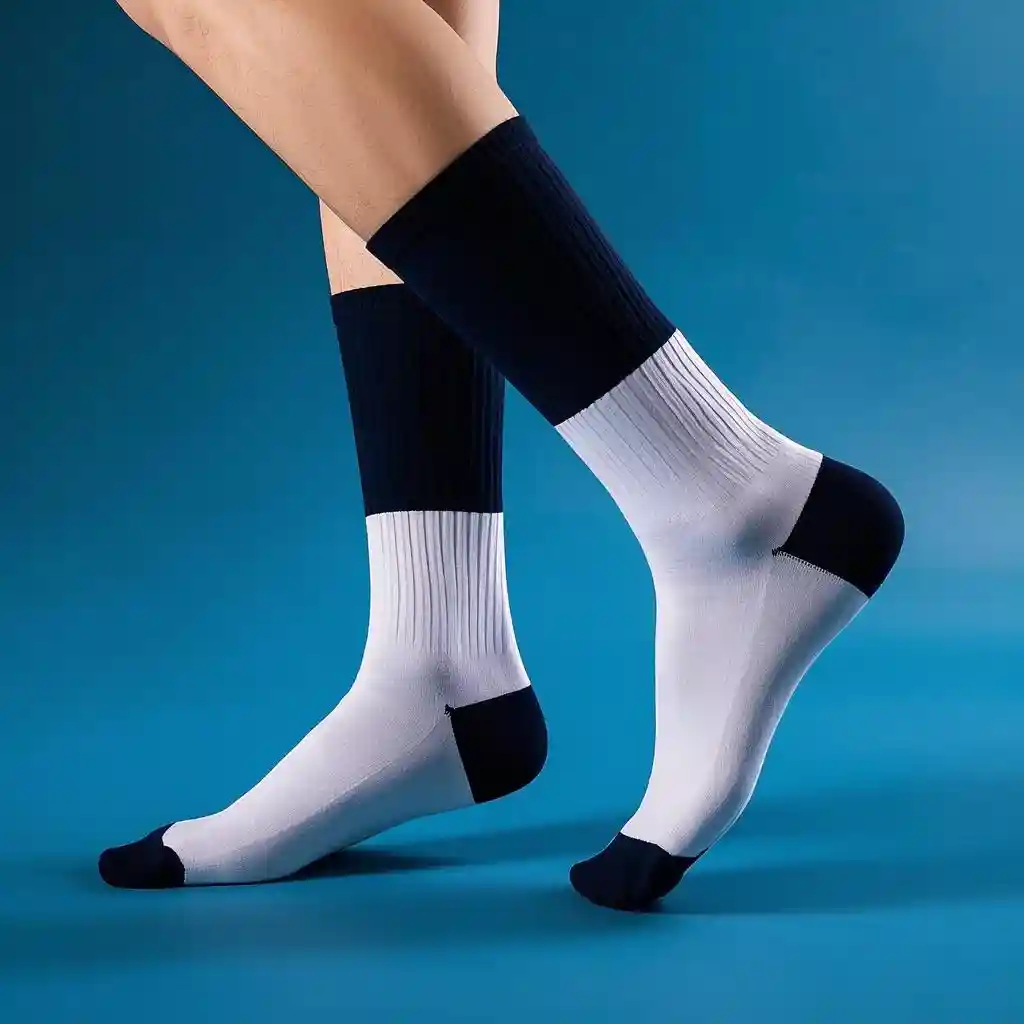
Role in Managing Foot Discomfort
Compression socks also play a vital role in minimizing discomfort caused by the strain flat feet place on muscles and joints. The uniform pressure reduces micro-vibrations during activity, easing fatigue and soreness. By promoting proper alignment and relieving pressure on overworked areas, these socks help address common sources of pain. Whether worn during exercise or throughout the day, they offer relief and help prevent the exacerbation of existing discomfort, ensuring greater comfort and ease in daily life.
This combination of circulation improvement, stability enhancement, and discomfort relief makes compression socks an effective solution for managing the challenges associated with flat feet. Learn more about benefits of compression socks.
Choosing the Right Compression Socks
Measuring for the Perfect Fit
Achieving the ideal fit is crucial for maximizing the benefits of compression socks. Start by measuring the circumference of your ankle and calf, as well as the length of your lower leg. These measurements ensure the socks provide appropriate pressure without feeling too tight or restrictive. A well-fitted pair stays in place, offering consistent support throughout the day. Proper sizing is critical for functionality—if the sock is too loose, it won’t provide effective support, and if it’s too tight, it could impede circulation or cause discomfort. Use the size chart provided by the manufacturer, and ensure the socks are flat and wrinkle-free when worn, with the toes and heels in the correct position.
Picking the Correct Compression Level
The compression level of these socks is typically measured in mmHg, with different levels catering to different needs. For daily prevention or mild flatfoot symptoms, a moderate level of 15-20 mmHg offers sufficient support and comfort. For more severe conditions, such as moderate edema, varicose veins, or deep vein thrombosis, a higher level of 20-30 mmHg may be required but should be used under professional supervision to ensure safety and effectiveness.
Key Considerations for Comfort and Style
The material and style of compression socks directly affect comfort and functionality. Knee-length socks are the most common, providing support from the ankle to the calf and suitable for daily activities. Open-toe socks allow flexibility and breathability, making them ideal for warmer weather or activities requiring free toe movement, like dancing. Compression tights offer broader coverage, perfect for colder climates or when greater support is necessary.
Material selection is equally important. Cotton socks are soft and moisture-wicking but may lack breathability or elasticity during intense activities. Nylon socks are lightweight and snug, reducing chafing and discomfort for athletes. Merino wool socks regulate temperature, wick moisture, and resist odors, making them a versatile option for all seasons, especially for those prone to sweating or with sensitive skin.
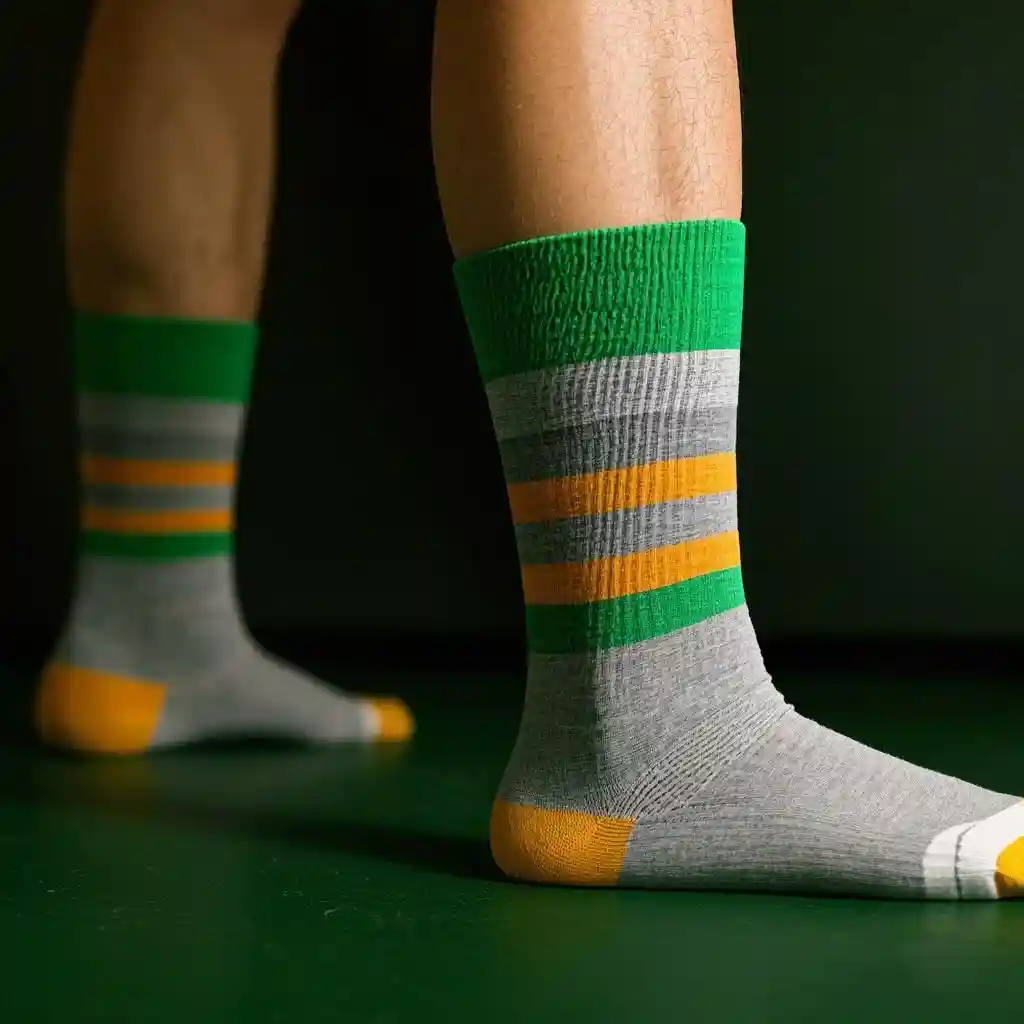
Suggestions for Using Compression Socks
Frequency of Wearing
Compression socks can be worn during daily activities such as long hours of standing work, walking, running, hiking, or other activities that may aggravate the feet. For some occupational groups, such as nurses, teachers, or waiters, who need to stand for extended periods due to the nature of their work, frequent use can help prevent fatigue and discomfort. Wearing them before and after exercise provides additional support, reduces the risk of injury, and promotes recovery. During recovery periods, such as after a long trip or intense activity, these socks accelerate blood flow, relieve swelling and pain, and aid the body in faster recovery. Consistency is key—regular use enhances their effectiveness in managing discomfort and promoting support.
Duration of Wearing
When wearing compression socks for the first time, a slight tightness in the legs and feet is normal. Begin with shorter intervals, such as a few hours, and gradually increase the duration to allow your body to adapt to the pressure. If discomfort or increased pain occurs, remove them immediately and consult a doctor or professional. For most individuals, once accustomed, these socks can be worn for longer periods depending on personal needs and comfort. However, it is essential to remove them periodically to let the skin breathe, avoiding irritation or skin problems. Proper usage ensures maximum benefits while maintaining overall foot health.
Common Myths and Misconceptions
Myth 1: Compression Socks Are Uncomfortable for Flat Feet
Another misconception is that compression socks are uncomfortable, especially for those with flat feet. While they do apply pressure, this pressure is gradual and designed to be comfortable. Many users report feeling more comfortable with the added support, especially when standing or walking for long periods. The key is to find the right compression level and fit, ensuring the sock is snug without being too tight.
Myth 2: Compression Socks Only Help with Swelling, Not Flat Feet
Some people believe compression socks are only effective for reducing swelling and have no impact on the structural issues of flat feet. While they certainly assist in reducing swelling, their benefits go beyond that. The gentle pressure from compression socks helps support the arch and improve foot posture, which can relieve pain and discomfort associated with flat feet.
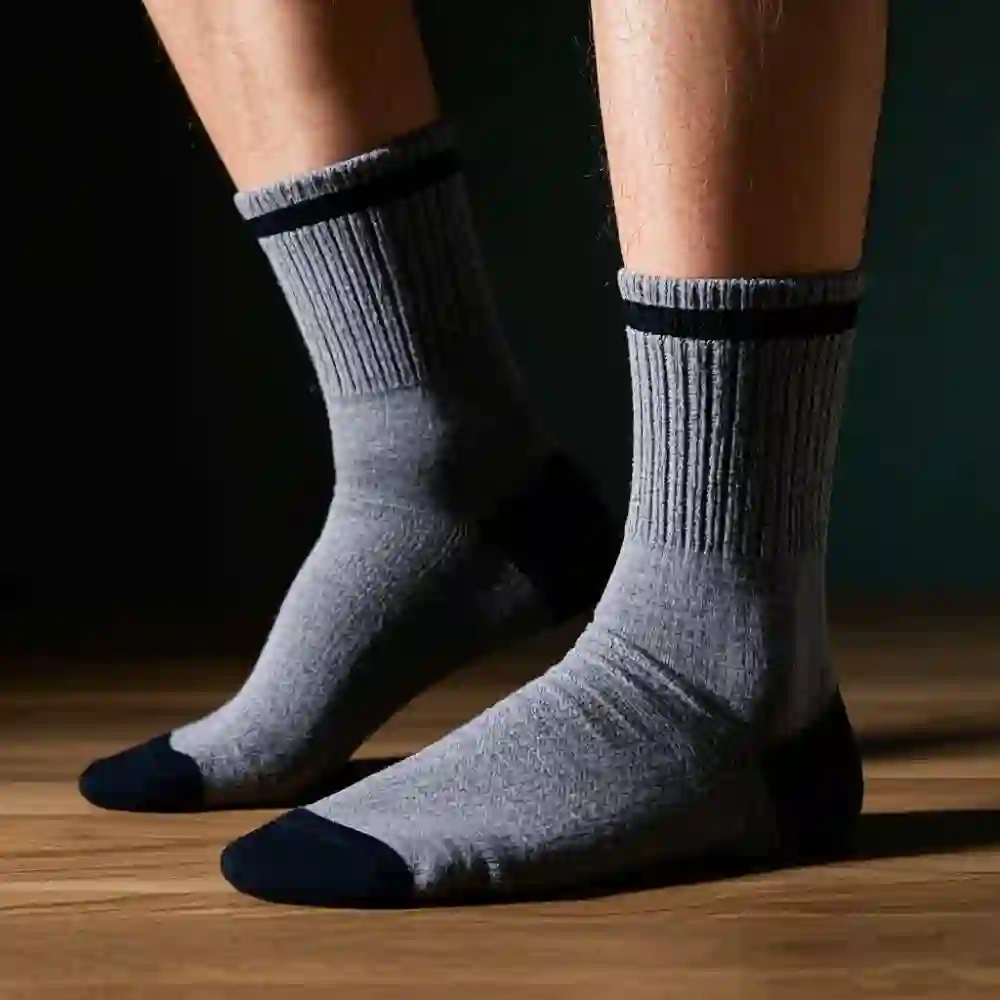
Myth 3: Flat Feet Are Caused by Improper Footwear
One common misconception is that flat feet develop solely due to wearing the wrong shoes. In reality, flat feet are primarily influenced by factors such as genetics, age, weight, muscle strength, or injury. While improperly designed footwear can exacerbate discomfort or contribute to fatigue, it is not the root cause of the condition. Proper shoes can relieve symptoms by providing better support, but they cannot alter the structural shape of the arch. Addressing flat feet effectively often requires a combination of targeted support, strengthening exercises, and appropriate footwear.
Myth 4: People with Flat Feet Should Not Run
Another widespread belief is that running is off-limits for individuals with flat feet. On the contrary, many people with flat feet, including marathon and sprint athletes, successfully engage in high-impact activities. Running-related pain in flat-footed individuals is usually due to excessive internal rotation or muscle weakness, not the absence of an arch. In fact, flat feet can offer flexibility and better shock absorption during impact. With proper preparation, supportive footwear, and exercises to strengthen the lower leg muscles, running can be both safe and enjoyable for those with flat feet.
Myth 5: Only Flat Feet Need Arch Support
Arch support is often marketed as a solution exclusively for those with flat feet, but in truth, all foot types benefit from it. The arch is critical for absorbing pressure, stabilizing weight, and preventing a wide range of foot issues during movement. Whether your arches are flat, neutral, or high, proper support ensures better alignment, reduces strain, and enhances overall comfort.
Other Ways to Support Flat Feet
Custom Insoles and Orthotic Inserts
Orthotic devices and insoles are effective tools for managing discomfort by providing tailored support. These solutions help align the foot, redistribute pressure, and improve stability. Custom options, designed for specific needs, can enhance daily comfort and minimize strain. Pairing them with compression socks offers additional benefits, making them especially useful for individuals with high-impact routines or chronic issues.
Strengthening and Professional Guidance
Targeted exercises and stretches, such as calf raises or toe flexes, improve muscle strength and reduce tension. These practices, when combined with supportive gear, can alleviate discomfort and maintain mobility. Consulting a professional, such as a physical therapist, adds value by offering personalized recommendations and additional methods like taping or manual therapy for more comprehensive relief.
Lifestyle Adjustments for Lasting Comfort
Adopting thoughtful lifestyle habits can provide lasting relief. Managing body weight reduces stress on sensitive areas, while wearing supportive footwear protects the feet during daily tasks. Incorporating low-impact activities, such as swimming or yoga, strengthens the lower body without overloading the feet. Professional guidance ensures these adjustments are effective and tailored to your specific needs.
Conclusion
Flat feet can present daily challenges, but with the right strategies, managing them becomes much easier. Compression socks are a simple yet effective solution, offering improved circulation, enhanced stability, and reduced discomfort. When combined with custom insoles, targeted exercises, and thoughtful lifestyle adjustments, they play a key role in supporting overall foot health.
If you’re asking, are compression socks good for flat feet? the answer is clear—they provide tangible benefits when used as part of a comprehensive approach.
Are you a brand or retailer looking to offer high-quality compression socks to your customers? Contact us today to discuss how we can help you create custom solutions that meet your audience’s needs. Together, we can deliver products that enhance comfort and support for flat feet, ensuring your customers experience the benefits firsthand. Let’s start designing your next bestseller!
FAQs
Can I wear compression socks all day for flat feet?
Yes, compression socks can be worn throughout the day, especially during activities that put strain on the feet, such as standing or walking for extended periods. Start with shorter periods, and gradually increase wear time as comfort improves. Make sure to follow a wear schedule and remove them periodically to allow your skin to breathe.
Do I need a prescription to use compression socks for flat feet?
Compression socks for flat feet typically do not require a prescription unless you are dealing with severe symptoms like edema or circulation issues. For general discomfort and support, over-the-counter options with moderate compression (15-20 mmHg) are usually sufficient, but consulting a healthcare provider is always a good idea if you have concerns.
Can compression socks be paired with other foot support products?
Yes, compression socks can be paired with custom insoles or orthotic inserts to provide additional support and relief. Together, they help align the foot structure, improve comfort, and reduce strain on the arch and joints, enhancing overall foot health.
Can compression socks be worn during exercise or physical activities?
Yes, compression socks are ideal for use during exercise, especially for activities that place stress on the feet, like running or walking. They can help reduce muscle fatigue, improve blood flow, and support the arch and ankle, which can prevent injury and improve overall performance.
What compression level should I choose for flat feet?
For most individuals with flat feet, a moderate compression level of 15-20 mmHg is usually sufficient for general support and comfort. However, if you have more severe symptoms like swelling or chronic pain, a higher compression level (20-30 mmHg) may be recommended. Always consult a healthcare provider for personalized advice.
